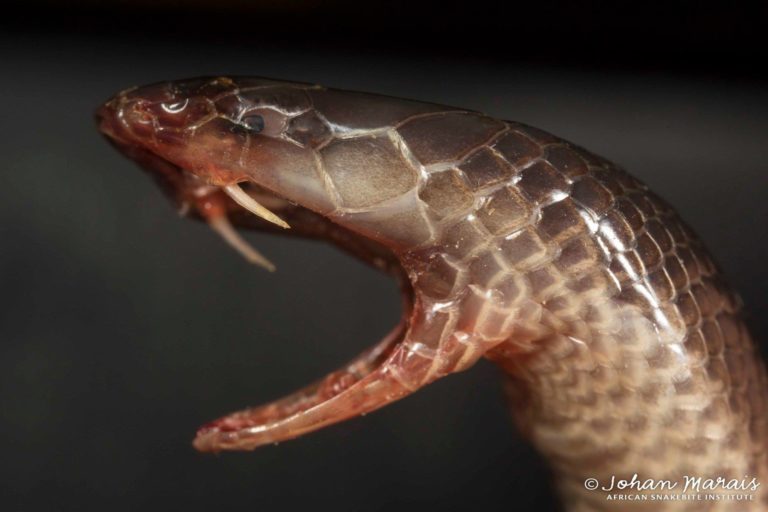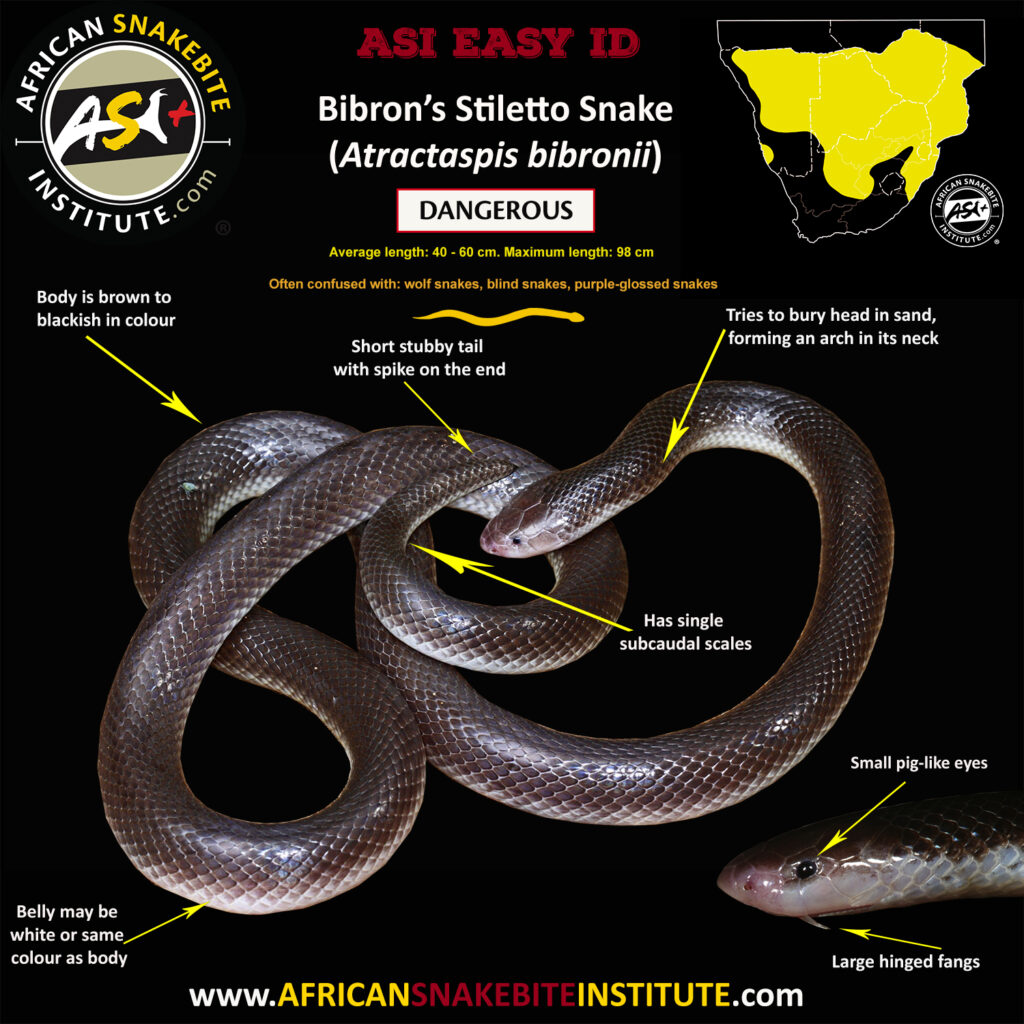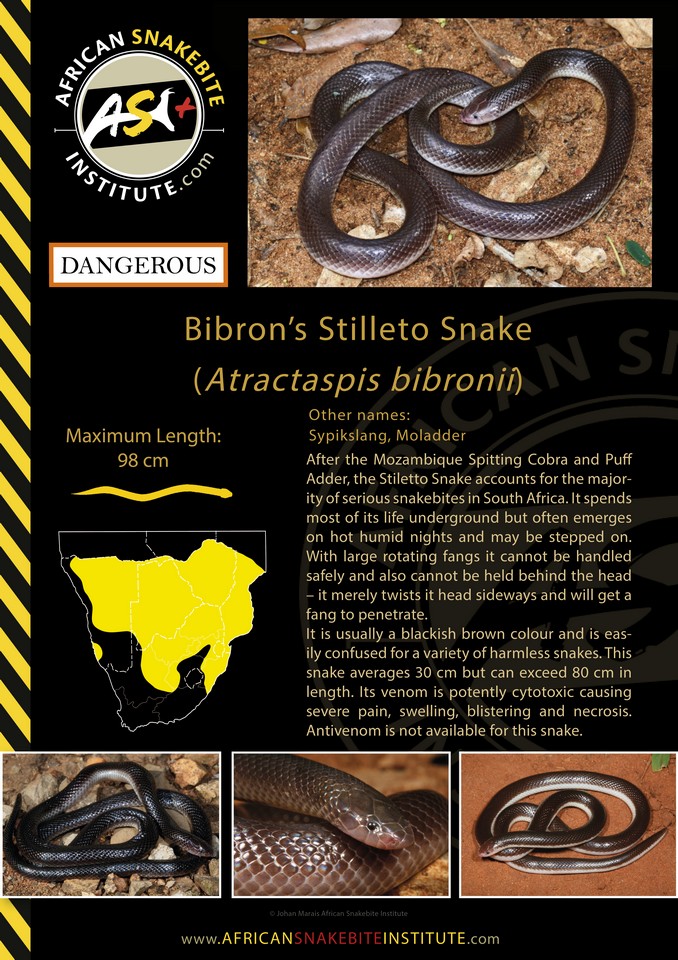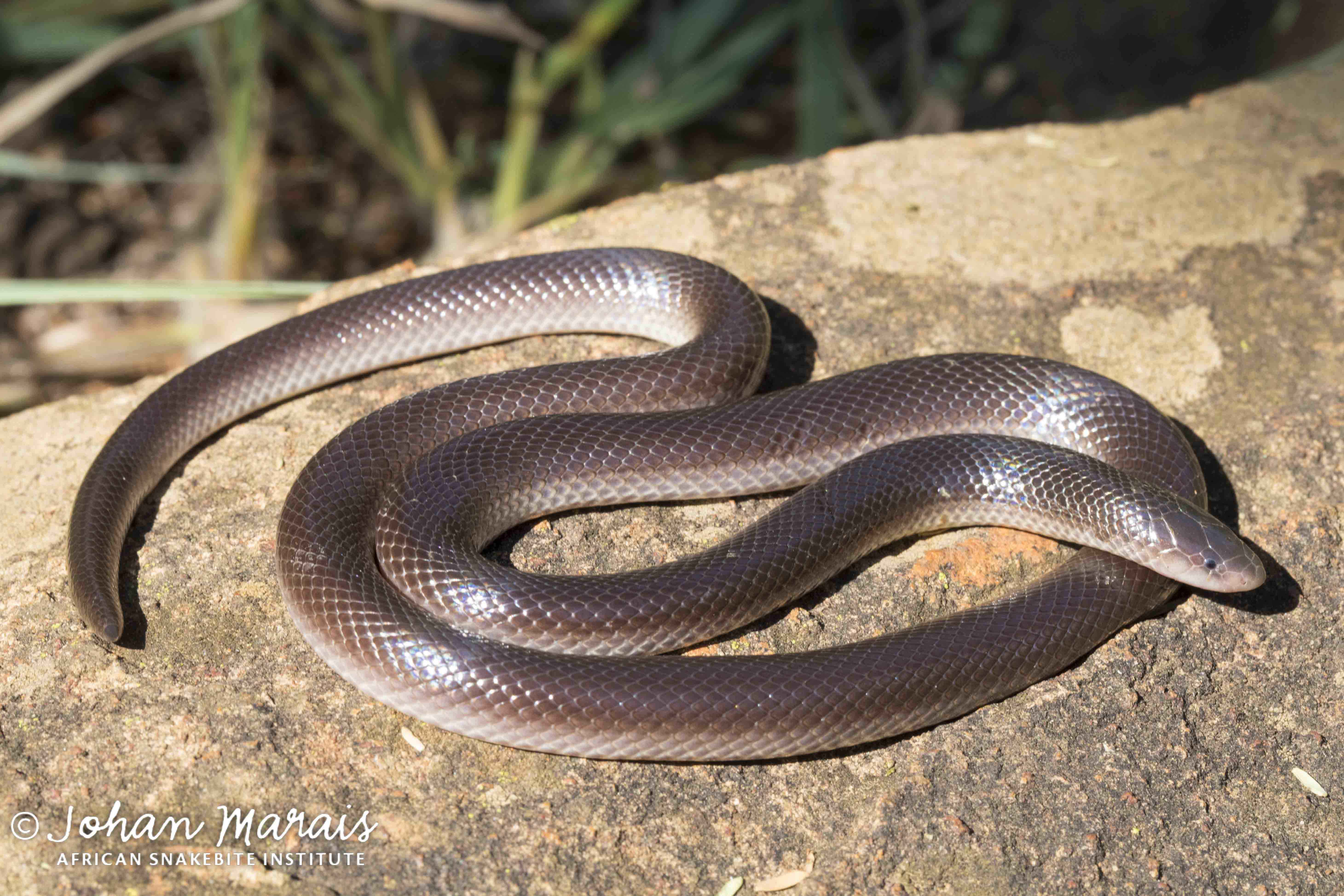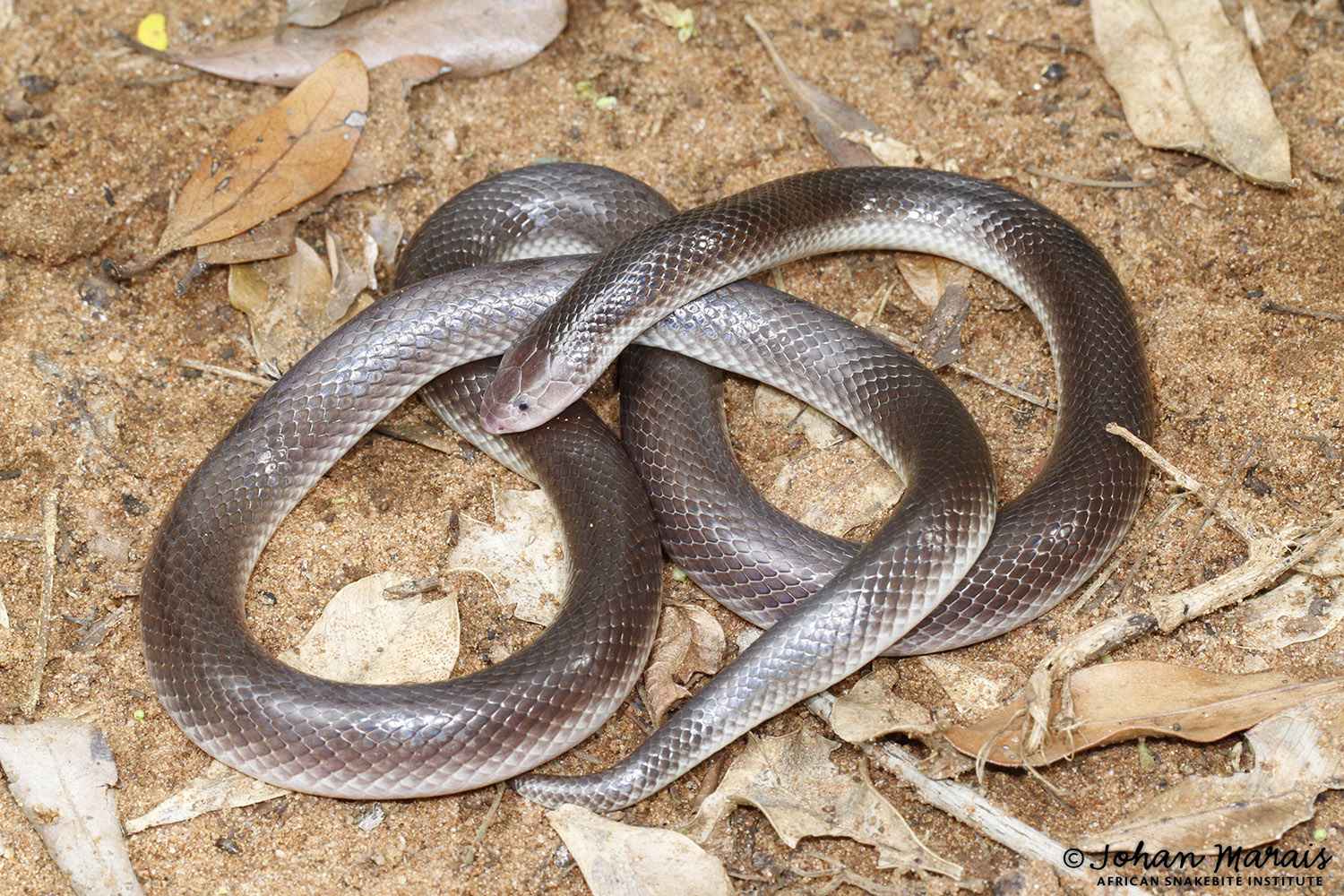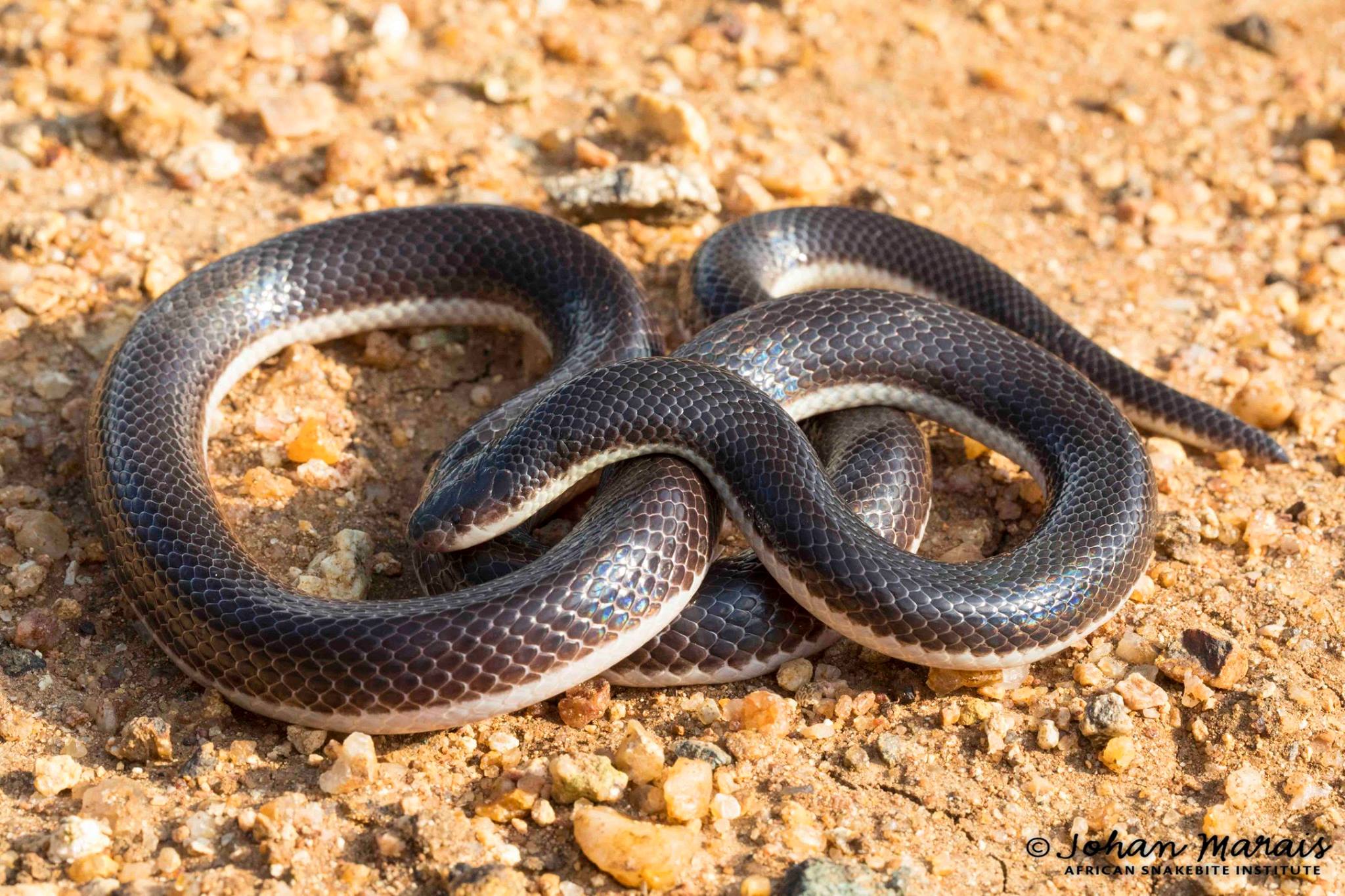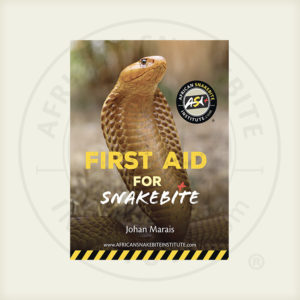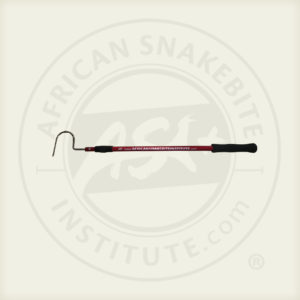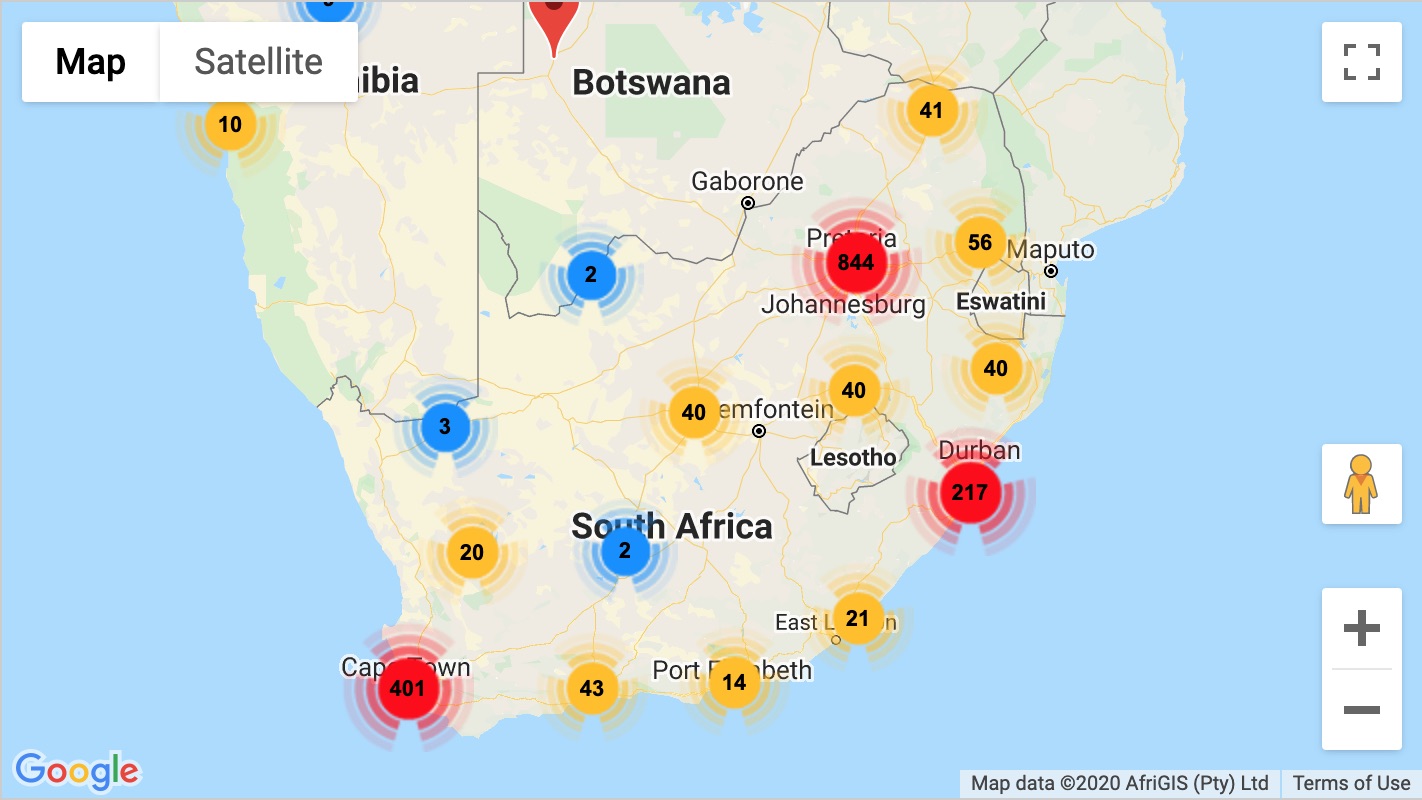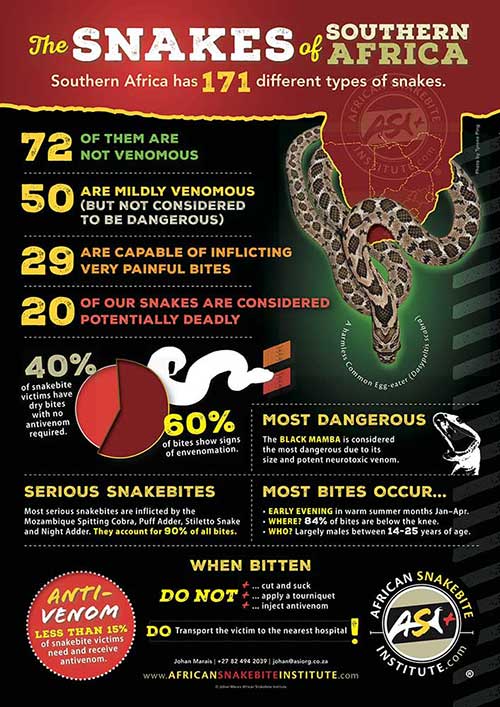The Stiletto Snake or Sypikslang (Atractaspis bibronii), is a small, highly venomous snake, that accounts for numerous snakebites during the summer months in Southern Africa. Previously known as a Mole Adder or Moladder, these dark snakes are often confused with harmless-looking snakes, and people tend to pick them up with their hands – the consequences of such a mistake can be very painful.
After the Mozambique Spitting Cobra and the Puff Adder, the Stiletto Snake accounts for the majority of serious snake bites in South Africa.
This fossorial snake spends most of its life underground, where it hunts for other snakes and lizards. It often emerges, usually in the early evening, and especially after rain.
To effectively bite within the limited space of burrows, the Stiletto Snake has particularly long fangs, which it can protrude independently to ‘stab’ its prey. Stiletto snakes are so named, because of these very large, hollow, mobile fangs situated in the front of the mouth, much the same a stiletto dagger used by assassins. If gripped behind the head, the Stiletto snake just protrudes a fang and twists its head sideways to inflict a bite from a single fang.
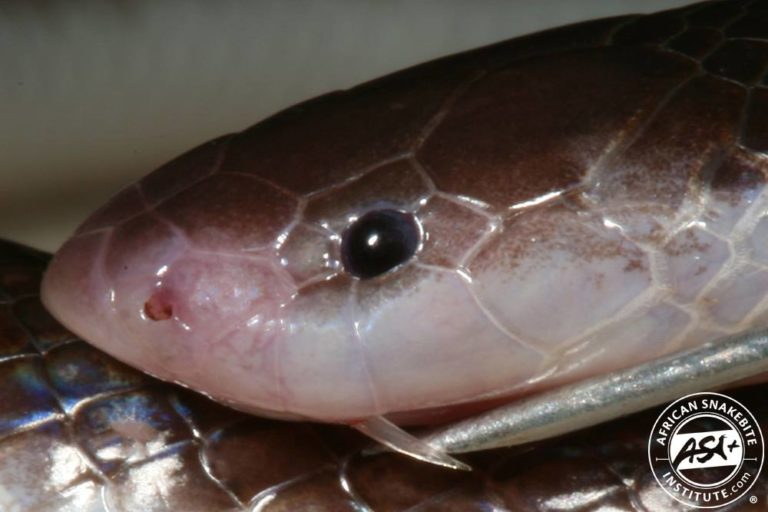
The venom of this snake, though not generally considered potentially fatal, is potently cytotoxic causing severe pain, swelling, blistering and in many cases tissue damage. Many victims lose a digit. As there is no antivenom, doctors can only treat for pain, rehydrate the patient and then wait a few days to see how extensive the tissue damage is.
In a paper on the treatment of Stiletto snake bites, Tilbury and Branch caution doctors not to resort to surgical intervention in the first few days following a bite, nor to lance blisters, as early surgical intervention seldom has a good outcome. There is no evidence that the early administration of antibiotics has any benefit.
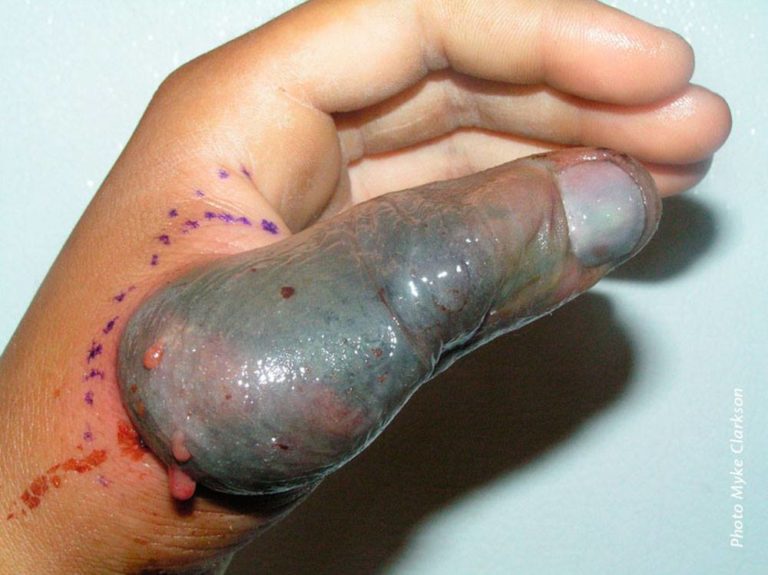
This snake is quite difficult to identify and is often mistaken for one of the harmless snakes. There are a few features one can look for. The body and belly may be the same dark brown to blackish colour, but in many areas the body is brown to blackish and the belly white. When on the surface, this snake will often try to escape by digging its head into the sand and this will result in an arch being formed, as illustrated in one of the photographs. They also tend to thrash around in jerky movements when threatened.
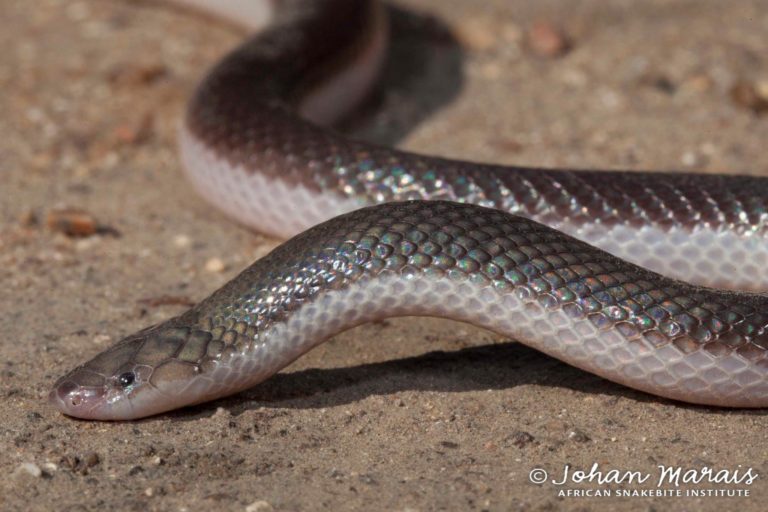
Another important feature of this snake is the relatively short and stubby tail with a distinct spike on the end – this snake may press the sharp spike into the hand of the person capturing it. It averages around 30 – 40 cm in length but may exceed 80 cm.
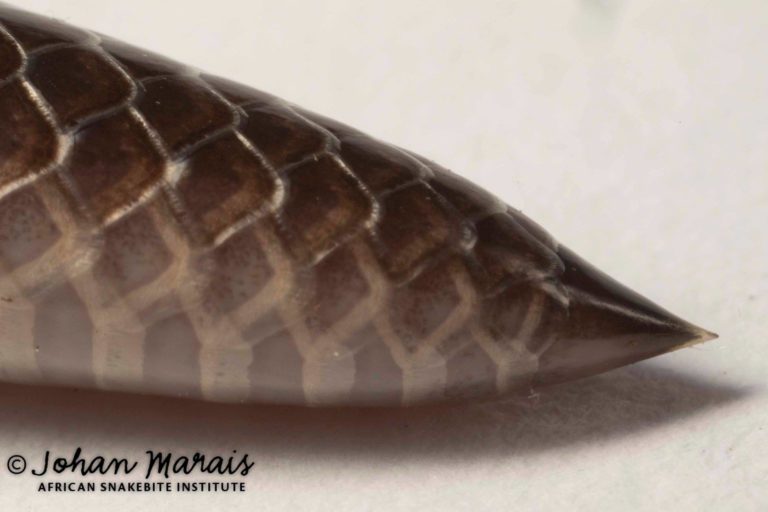
Whatever you do, do not handle any dark snake with your hands – rather contact a snake remover.
